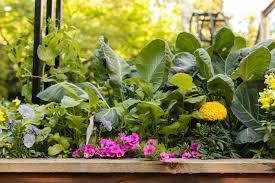Companion planting is a gardening technique where different plant species are strategically grown together to benefit each other. Whether you’re looking to boost plant health, repel pests, or increase yields, companion planting can make your garden thrive. Our new Garden Planner tool has made it easier than ever to find the perfect plant pairings based on proven research.
Effortless Companion Planting with Garden Planner
The Garden Planner’s companion planting feature streamlines the process. Simply select your desired crop, click the heart-shaped Companion Planting button, and you’ll instantly see a list of plants that complement your choice. You can even hold down the Shift key and select multiple plants, filtering the list to show companion plants suitable for both crops. This approach allows you to explore a wide variety of options without feeling overwhelmed.

Research-Backed Plant Pairings
We’ve focused on pairing plants based on solid scientific evidence to ensure that the advice is reliable and beneficial. Here are some examples of proven companion plant pairings:
Insectary Plants
Certain plants attract beneficial insects that help control pests. For example, poached egg plants attract hoverflies that prey on aphids, which are common pests on lettuce. Borage, known for attracting bees and pest-eating wasps, is a great companion for tomatoes. Studies have also shown that crimson clover, when grown with broccoli, can increase spider populations, which naturally control pest numbers.
Repelling Pests
Some plants act as natural pest repellents. Nasturtiums, for instance, draw aphids and caterpillars away from crops like fava beans and brassicas such as cabbage. Garlic is another example; its strong scent confuses pests like the green peach aphid and helps protect fruits like peaches and nectarines.

Additional Benefits of Companion Planting
Beyond pest control, many plants provide physical benefits to others. Tall plants like sunflowers can offer shade and support for vine crops like cucumbers and climbing beans. This is especially useful in hot climates where some crops can suffer from sun stress.
A well-known companion planting technique is the “Three Sisters” method, where beans, corn, and squash are grown together. The squash plants shade the soil, preventing weeds, while the beans use the corn stalks as natural supports and fix nitrogen in the soil, benefiting all three plants.
Legumes like beans and peas are also valuable for their nitrogen-fixing abilities, which enhance the soil quality for neighboring plants. For instance, planting beans with potatoes has been shown to improve tuber size.
Borage, another useful companion, adds trace minerals to the soil that benefit plants like strawberries, enhancing their growth and flavor.
Companion Planting as a Supplementary Strategy
While companion planting can provide numerous advantages, it should not be the sole focus of your gardening efforts. Crop rotation, proper spacing, and soil management are the foundation of a healthy garden. Think of companion planting as an additional tool that enhances your gardening experience.
If you have any tried-and-tested companion plant combinations that have worked for you, feel free to share them in the comments. Happy gardening!
